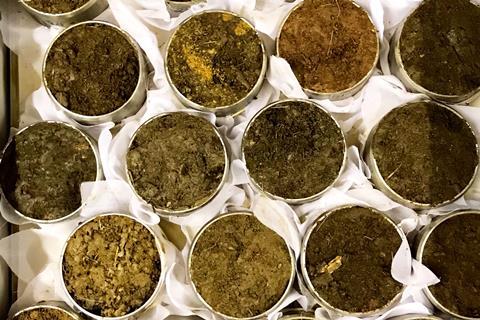ORC-led project aims to give farmers and growers better knowledge to manage their soils

A new project has been launched that will evaluate 10 different soil health indicators to create a framework for farmers and growers to manage the health of their soil better.
The project is being led by researchers from the Organic Research Centre (ORC), which is managing the knowledge exchange and delivering the shortlist of early indicators of soil health. Colleagues from Scotland’s Rural College (SRUC) will lead on the interpretation framework.
ORC researcher Dr Julia Cooper explained: “This research is set to directly address a significant barrier for farmers: the challenge of effectively monitoring and managing soil health. Farmers often lack clear, accessible and affordable ways to evaluate the health of their soil, which makes informed management decisions difficult.
“The project will create a ranked list of early indicators of soil health coupled with a practical interpretation framework to tackle that need head-on. It will cover biological metrics like the soil food web, phospholipid fatty acids and CO2 burst, all of which are key areas of interest for farmers exploring the impact of their management on soil biology.”
She said findings will be shared through workshops, freely available news items published online and through the channels of the Agriculture & Horticulture Development Board and SRUC, ensuring accessibility to farmers and growers across the UK. The findings will also be utilised by AHDB to inform its programme of soil health recommendations.
ORC researcher Dr Catriona Willoughby added that the project would involve key partners and industry experts and would focus on practical information to help farmers understand what their soil data mean for the farm’s long-term health and productivity.
“A key output will be economic rationale: the research will evaluate the potential of the selected metrics to support agricultural productivity through crop yields, linking environmental stewardship with the economic viability of farm operations,” she said.
“We are building on previous and current national-scale initiatives, including the AHDB’s soil health scorecard and the Defra healthy soil indicator.”
Willoughby said that a combination of project team expertise, industry input and stakeholder feedback will be utilised to select the most appropriate early indicators of soil health. To refine the list of indicators proposed, a logical sieve will be used to score each shortlisted indicator against six criteria: data robustness, links to ecosystem services, sensitivity to agricultural management, ease of sampling, cost-effectiveness and interpretability.
Results will draw on careful review of soil health literature, open-data repositories, expert consultation and engagement with commercial laboratories, agronomists and farm advisers. The project team will develop an interpretation framework for the top three ranked indicators to establish meaningful thresholds and rates of change to produce a traffic-light scorecard that is complementary to the current soil health scorecard.
Willoughby said workshops will be conducted in the final phases with farmers and farm advisers, alongside representatives from AHDB, to ensure indicators and advice are relevant and usable on the ground.
“The health and future of our soils are key to the future of farming,” she concluded. “Ultimately, this project will help farmers make decisions that keep their soil productive and healthy, which is a critical aspect of environmental provision for future generations.”



